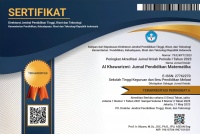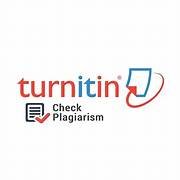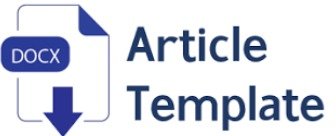PENINGKATAN PEMAHAMAN KONSEPTUAL MATEMATIS DAN RESPONS SISWA MELALUI PEMBELAJARAN BERBASIS MULTI REPRESENTASI DI SEKOLAH MENENGAH ATAS
DOI:
https://doi.org/10.46368/kjpm.v1i2.408Abstract
ABSTRAK
Penelitian ini bertujuan untuk menjelaskan secara empiris mengenai peningkatan pemahaman konseptual (PK) matematis dan respon siswa terhadap materi pembelajaran barisan dan deret aritmetika melalui pembelajaran Multirepresentasi (PM). Dengan penelitian quasy experiment menggunakan pendekatan deskriptif analitik yang melibatkan 33 siswa kelas XII SMA Muhammadiyah 2 Pontianak tahun pelajaran 2014/2015 sebagai subjek penelitian. Data yang diperoleh dari penyebaran angket, observasi, dokumentasi, tes, dan wawancara, perolehannya dideskripsikan dan dianalisis. Hasilnya, menunjukkan terjadi kecenderungan peningkatan PK matematis siswa dalam materi barisan dan deret aritmetika, serta mampu menimbulkan respon positif siswa selama proses pembelajaran. Kecenderungan tersebut terjadi karena PM yang dilakukan dengan variasi pendekatan saintifik dan penggunaan LKS yang terfokus pada learning discovery.Â
Â
Kata kunci:Â Konseptual Matematis, Pembelajaran Multi Representasi, Respons Siswa
Â
ABSTRACT
This study aims to explain empirically about increasing mathematical conceptual understanding (PK) and students' responses to learning materials for arithmetic sequences and series through Multirepresentation (PM) learning. With a quasi-experimental research using an analytical descriptive approach involving 33 students of class XII students of SMA Muhammadiyah 2 Pontianak in the 2014/2015 academic year as research subjects. The data obtained from the distribution of questionnaires, observations, documentation, tests, and interviews, the results were described and analyzed. The results showed that there was a tendency to increase students' mathematical PK in arithmetic sequences and series, and were able to generate positive responses from students during the learning process. This tendency occurs because PM is carried out with a variety of scientific approaches and the use of worksheets that focus on learning discovery.
Â
Keywords: Mathematical Conceptual, Multi-Representation Learning, StudentResponse
Â
References
BaroodyA. J., Feil Y.,dan JohnsonA.R. (2007). An Alter-native Reconceptualization of Procedural and Conceptual Knowledge. Journal for Research in Mathematics Education, 38(2), 115–131. doi:10.2307/30034952
BSNP. (2016). Permendiknas Nomor 21 Tahun tentang Standar Isi 2006.Jakarta: BNSP.
BSNP. (2006). Permendiknas Nomor 65 Tahun 2013 tentang Standar Proses. Jakarta: BNSP.
BSNP. (2013). Permendikbud No 81 A Tahun 2013 tentang Implementasi Kurikulum. Jakarta: BSNP.
BSNP. (2006). Permendiknas Nomor 41 Tahun 2006 tentang Standar Proses. Jakarta: BNSP.
CetinH. , dan Aydin S. (2018) The Effect of Multiple Representation Based Instruction on Mathematical Achievement: A Meta-Analysis. International Journal of Educational Research Review. DOI:10.24331/ijere.647531
Dit.PSMA. 2013. Pembelajaran Berbasis Kompetensi Mata Pelajaran Matematika Melalui Pendekatan Saintifik. Jakarta:Kemdikbud.
Demetriou,A., Shayer,M., and Efklides,A. (1992). Neo-Piagetian Theories of Cognitif Development. New York: Routledge.
Halim,D.F.; Santoso, B.; dan Aisyah,N. Kesalahan Siswa Dalam Menyelesaikan Soal-soal Pemecahan Masalah Matematika di Kelas VIII SMP Negeri 1 Indralaya Selatan. Jakarta: P4TK Matematika Volume 5 tahun 2014).
Hattie, John A. (2008). Visible Learning: A Synthesis of Over 800 Meta-Analyses Relating to Achievement. ISBN 0-415-47618-6
Hudiono, B. (2005). Peran Pembelajaran Diskursus Multi Representasi Terhadap Pengembangan Kemampuan Matematika dan Daya Representasi Siswa SMP. Jurnal Cakrawala Kependidikan
Hudiono,B.(2007). Repesentasi dalam Pembelajaran Matematika. Pontianak:STAIN Pontianak Press.
Iryanti,P.(2010). Potret Pengajaran Matematika SMP Kelas 8 di Indonesia. Jakarta:P4TK Matematika (Jurnal Edumat Volume 1 nomor 2 tahun 2010)
Jakarta:P4TK Matematika (Jurnal Edumat Volume 5 No. 10 tahun 2014)
Kollofell,B., Eysink,T.H.S, Jong,T.D. (2011). Comparing the Effects Representational Tools in Collaborative and Individual Inquiry Learning. Computer-Supported Learning , 223-251.
Lin, Y. W., Tseng, C. L., & Chiang, P. J. (2017). The Effect of Blended Learning in Mathematics Course. Eurasia Journal of Mathematics, Science and Technology Education, 13(3), 741–770. https://doi.org/10.12973/eurasia.2017.00641a
NCTM. (2000). Principles ang Standars for School Mathematics. America: Assosiation Drive, Reston.
Nurhayati .(2014). Pengembangan Bahan Ajar Turunan Fungsi Melalui PEndekatan Konstruktivisme di Sekolah Menengah Atas. Jakarta:P4TK Matematika (Jurnal Edumat Volume 4 nomor 8 tahun 2013)
Rohaya.S, Darmawijoyo,Kesumawati.N. Pengembangan Bahan Ajar Operasi Bentuk Aljabar Kelas VII Sekolah Menengah Pertama (SMP) Dengan Pendekatan Pendidikan Matematika Realistik Indonesia (PMRI).
Sumardyono.(2010). Kemampuan Siswa Sekolah Dasar Dalam Penguasaan Istilah dan Simbol Matematika. Jakarta:P4TK Matematika (Jurnal Edumat Volume 1 nomor 1 tahun 2010).
Suratman, D. (2010). Pemahaman Konseptual dan Pengetahuan Pprosedural pada Materi Pertidaksamaan Llinear Satu Variabel di kelas VII MTs Ushuluddin, Singkawang. 10.
Pusat Bahasa Departemen Pendidikan Nasional. (2001). Kamus Besar Bahasa Indonesia. Jakarta: Balai Pustaka.
Xie, C. Wang, M. Huimin, H. (2018) "Effect of Constructivist and Transmission Instructional Models Mathematics Achievement in Mainland China: A Meta-Analysis". Frontier in Psychology ( Volume 9 Nomor 1923)
Wladis, C., Offenholley, K., Licwinko, S., Dawes, D., & Lee, J. K. (2017). Theoretical Framework of Algebraic Concepts for Elementary Algebra. In T. Fukawa-Connelly, N. Engelke Infante
Downloads
Published
How to Cite
Issue
Section
Citation Check
License
Authors who publish with this journal agree to the following terms:
1. Authors retain copyright and grant the journal right of first publication with the work simultaneously licensed under a Creative Commons Attribution License that allows others to share the work with an acknowledgement of the work's authorship and initial publication in this journal.
2. Authors are able to enter into separate, additional contractual arrangements for the non-exclusive distribution of the journal's published version of the work (e.g., post it to an institutional repository or publish it in a book), with an acknowledgement of its initial publication in this journal.
3. Authors are permitted and encouraged to post their work online (e.g., in institutional repositories or on their website) prior to and during the submission process, as it can lead to productive exchanges, as well as earlier and greater citation of published work.






